?Giant dinosaurs and four-legged predatory whales.. What was Egypt like 100 million years ago
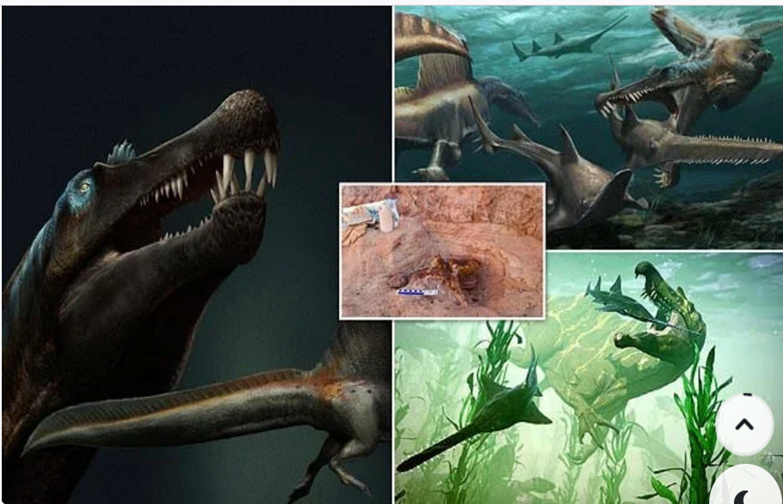
?Giant dinosaurs and four-legged predatory whales.. What was Egypt like 100 million years ago
Imagine, dear reader, that you are now attending a competition for speed questions and you are asked one of the questions as follows: “What is the first thing that comes to your mind when you hear the name Egypt?” What will your answer be? Let me answer on your behalf. Your answer may be one of these: the pyramids, the Nile River, the Sphinx and the Pharaohs, or perhaps Mohamed Salah! In fact, these are the answers of most of us if we were in your place, but do not be surprised if one of the other answers is: huge dinosaurs, predatory whales that walk on their feet, or even giant snakes that weigh up to half a ton! Indeed, all of them are correct answers. Welcome to Egypt, which was home to these creatures for more than 100 million years.
Indeed, these creatures were what inhabited the land of Egypt for millions of years, as its land was completely different from what we know now. It was covered with water and trees, which made it an excellent environment to contain them, especially the desert region that now exists between the Nile River and Libya, which is what we call the Western Desert, which is actually the place of their presence. Fossils of all those creatures mentioned above.
The Western Desert at that time was a great sea called the Sea of Tethys, of which the Mediterranean Sea that exists now is considered a small part. Most of Egypt’s governorates represented the bottom of that sea, which extended from Alexandria to Luxor. The sea was full of wondrous creatures over millions of years, and when the water dried up and those areas turned into vast deserts, this amazing world was revealed among the accumulated layers of sand and rocks, showing us its surprises one after another over the past decades.
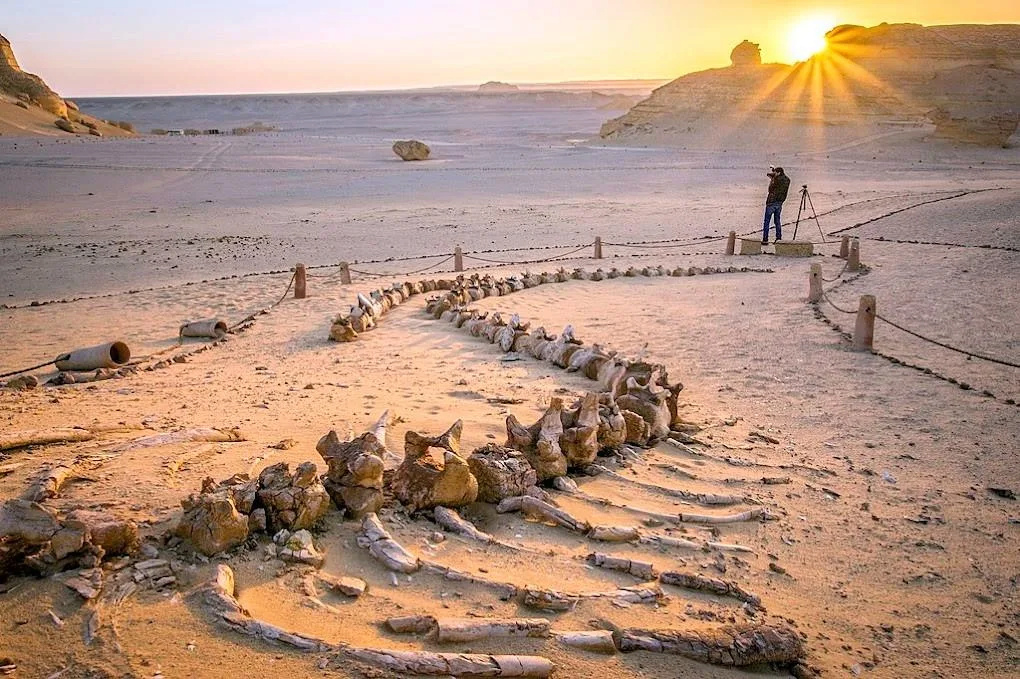
Ancient Egypt from 100 million years ago
One of these amazing areas is the Valley of the Whales in Fayoum, in which a large amount of bones were found belonging to extinct species of whales that inhabited the Tethys Sea 40 million years ago! This is not only the reason why UNESCO registered it as a World Heritage Area, but also because it is one of the important sites witnessing the transformation of whales from land mammals to marine mammals, a matter that had long puzzled scientists before.
Well, let us suffice with this amount of side talk and begin our journey to ancient Egypt, specifically 95 million years ago.
Spinosaurus - Spinosaurus

Scientists believe that it was the ugliest creature on the face of the Earth, as its skull alone was 1.7 meters long, while its body was about 18 meters long and weighed 22 tons. Thus, it is considered the largest meat-eating dinosaur ever. It lived on the land of Egypt 95 million years ago and was distinguished by its sail-like part. On its back, which is made up of bony spines, the largest of which reaches 170 cm in length. Some believe that this part helped it enter the water to catch its fish prey. It also fed on some types of dinosaurs.
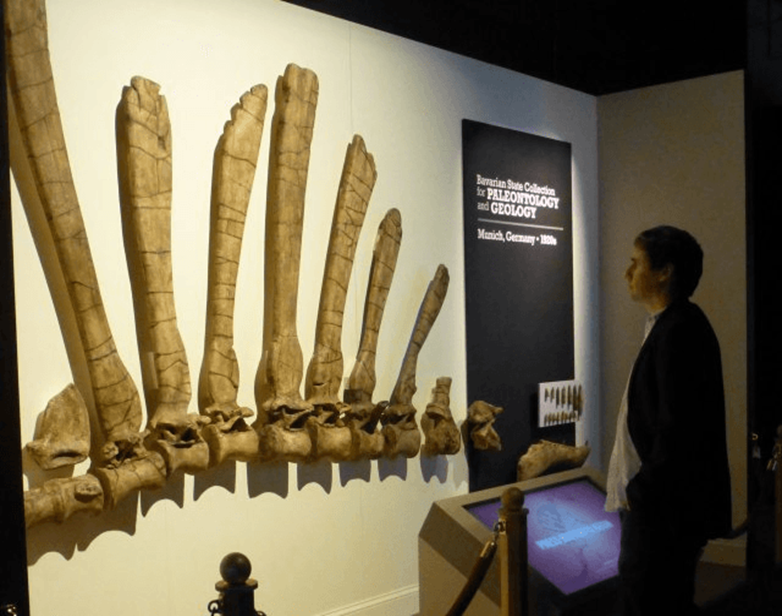
The Spinosaurus skeleton was discovered and named by German scientist Ernst Stromer in 1915 in the Bahariya Oasis area and remained preserved in a museum in Munich until 1944 when the museum was completely destroyed in World War II.
Mansourasaurus
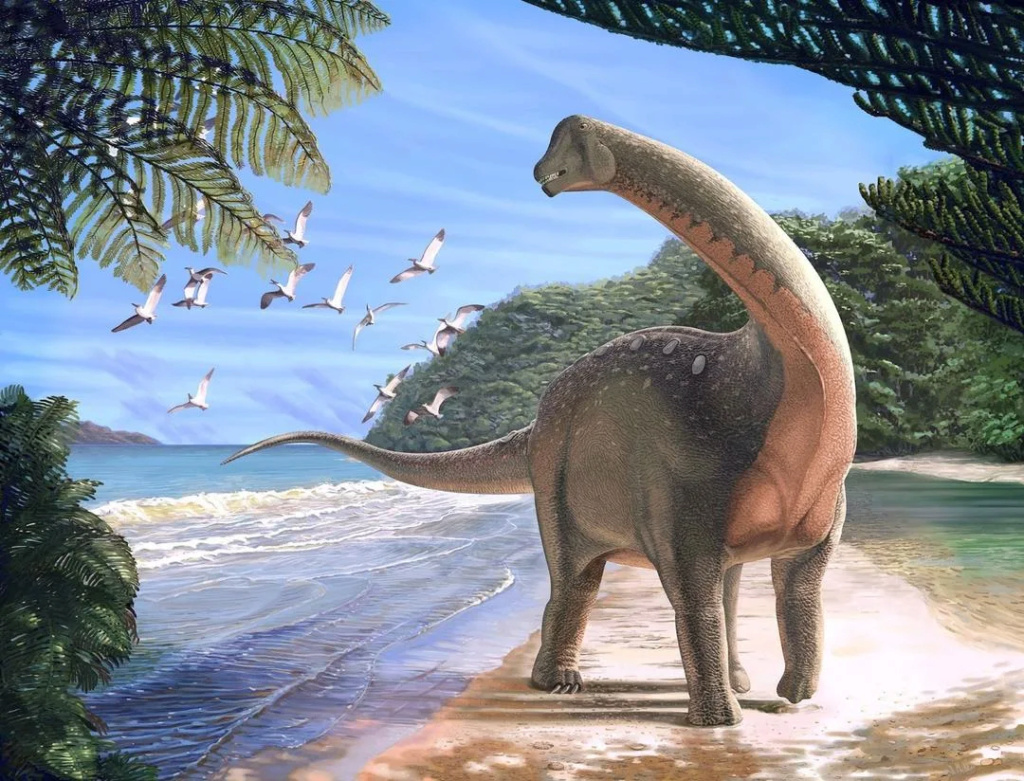
This giant dinosaur, which belongs to the Titanosauria family, and which may seem savage, but it ate only plants. It was 10 meters long and weighed about 5 and a half tons. It lived in Egypt approximately 75 million years ago in the period of what was called the Cretaceous period, and despite its size The enormous size is approximately the size of a school truck, but it is considered much smaller than some of its peers, whose weights have reached 70 million tons!
The discovery of Mansourasaurus is not an ordinary discovery of a dinosaur, but with its appearance it filled a time gap that had long been empty regarding the presence of dinosaurs in Africa, as in the period between 66 and 100 million years ago, that is, the last 30 million years before the extinction of the dinosaurs, scientists did not know what was happening in this area. From Earth over such a long time, and with its discovery, the picture finally became clear to them and planted hope for reaching more information about the causes of the massive wave of extinction that swept away most of Earth’s creatures!

Mansourasaurus was named after Mansoura University, whose research team led by Dr. Hisham Salam, head of the Mansoura Center for Vertebrate Paleontology, discovered a large portion of the bones of this dinosaur’s skeleton in the Dakhla Oasis region in the Western Desert in 2018, making Mansourasaurus the sixth dinosaur discovered in Egypt.
Phiomicetus anubis
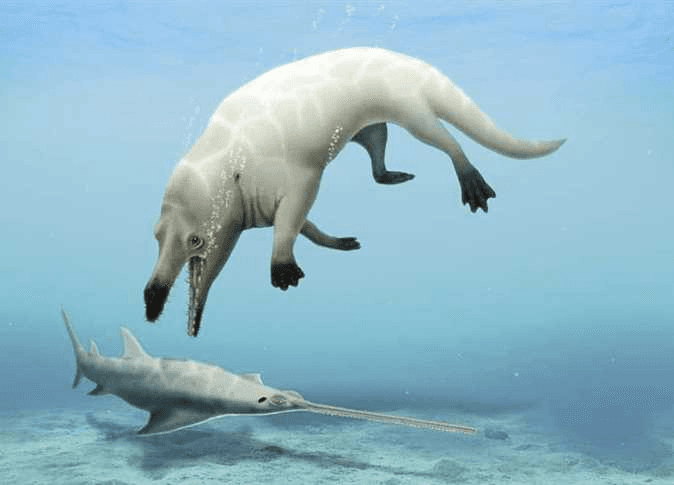
Your knowledge of whales may be that they are gentle, peaceful, human-friendly animals like the willy whale in the movie Free Willy which I personally have loved since I was a kid, but the whales found in Egypt 43 million years ago were far from that kind.
Pheomycetes Anubis is a whale that weighs 600 kilograms and is up to 3 meters long. It has a large and powerful jaw that makes its bite deadly without a doubt. The surprise is not in all of the above, but rather in the fact that it has four legs. No, they are not fins that resemble legs or just bony appendages, but rather they are real legs.!
The bones of Phiumycetes were discovered in 2021 in the Fayoum Desert, which was named after it, by a research team from Mansoura University led by researcher Abdullah Gohar, and it was proven after studies that his legs were used by him to actually walk outside the water on land to easily capture his prey and that he was thus able to live. In both environments, it is the link between land and marine whales. Although Phiumycetes is not the first four-legged whale to be discovered, as another whale similar to it was discovered in Peru in 2011, Phiumycetes is believed to be the most primitive of this species and the first on the African continent.

Scientists currently believe that whales, since they are originally mammals, evolved from deer-like creatures that walked on all fours and lived on land for approximately 10 million years, then gradually acquired some new characteristics that qualified them to live in the water. This development appears in primitive whale fossils discovered from... Before such as Basilosaurus and Dorudon.
Gigantophis - gigantophis
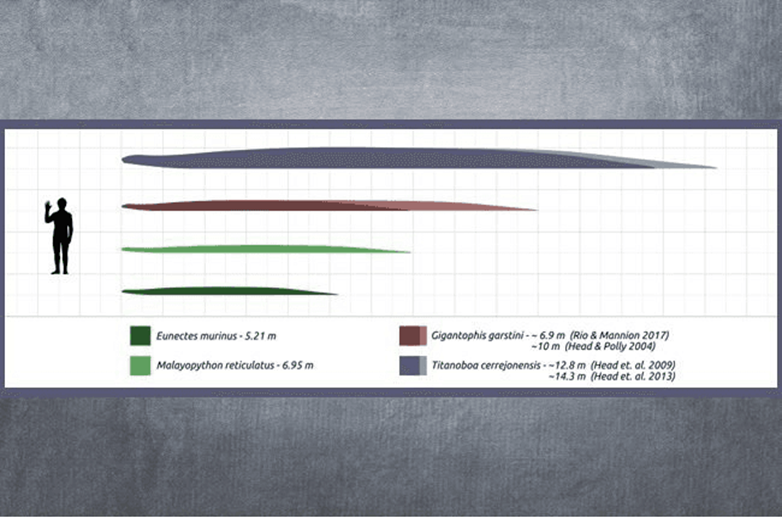
This may be the scariest of them all for me, as it held the title of the largest snake on Earth about 40 million years ago! With a length of up to ten meters and a weight of half a ton, it fed on crocodiles and other reptiles and hunted them with the skill of a skilled hunter after hiding well underwater. It was discovered by paleontologist Charles William Andrews in the Western Desert in 1901. Gigantophys maintained its title until the strongest and largest in North America appeared. Titanoboa snake, which weighed one and a quarter tons!
Source: websites

